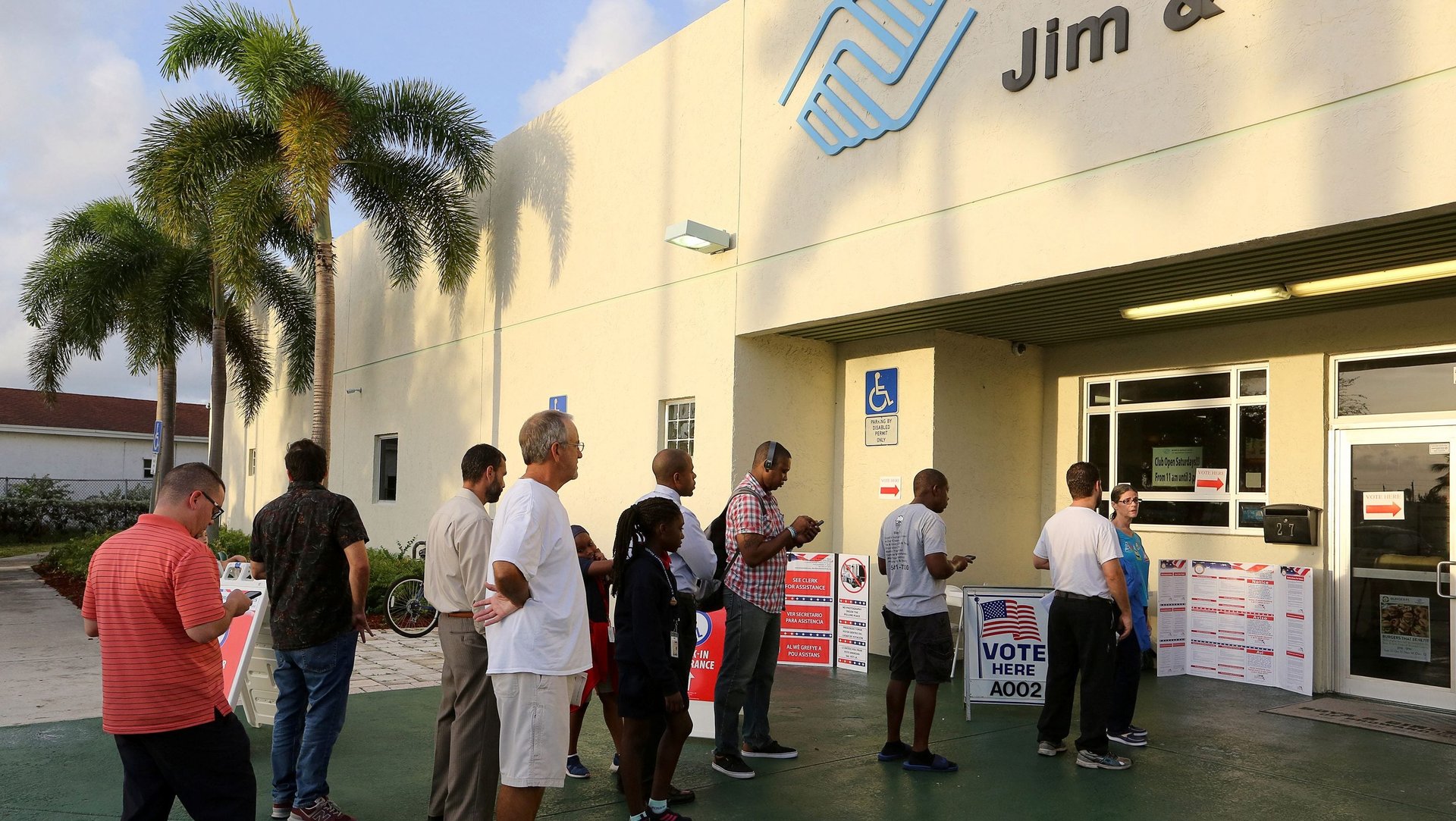Florida gave the right to vote to 1.4 million ex-offenders. Who will they vote for?
As part of the midterm elections, Florida residents voted to restore the right to vote to more than 1 million people who have felony convictions on their record. It’s truly a historic moment that challenges the long, racist history of voter disenfranchisement in America. It also raises the question: where do these new voters fall on the political spectrum? The answer is not as simple as it may seem.


As part of the midterm elections, Florida residents voted to restore the right to vote to more than 1 million people who have felony convictions on their record. It’s truly a historic moment that challenges the long, racist history of voter disenfranchisement in America. It also raises the question: where do these new voters fall on the political spectrum? The answer is not as simple as it may seem.
At first glance, it’s tempting to say that it’s a win for Democrats. The Republican candidates opposed the amendment. Across the US, including Florida, people with felony convictions are disproportionately African-American, a voting bloc that usually votes blue. Still, the majority of ex-offenders might be nonblack, as is the case in Florida. There, this question is especially salient: it’s a swing state, where the election margins can be quite small.
We’ve had this debate before, after perhaps the most contentious election in recent history: Bush versus Gore, in 2000. Some researchers argued that allowing ex-felons to vote in Florida would have swung the election for Gore. Others said that because the majority of ex-felons were white, it wouldn’t have made a difference.
Christopher Uggen, one of the leading US criminologists on the issue of felony disenfranchisement, was in the former camp. He holds the same view for this election, he told Quartz. In the governor race, the margin was relatively small, with Republican Ron DeSantis topping, so far, Democrat Andrew Gillum by about 40,000 votes (in the Senate race, the margin is even smaller. Both races are being contended). If you estimate ex-felons’ turnout rate to be about 20%, he said, and a Democratic preference of about 60%, “it is certainly conceivable” that the outcome could have been different.
There’s also a debate over turnout. Others have considered turnout rates from past elections that included re-enfranchised ex-offenders, and their participation had been lower (12% for nonblack ex-offenders and 16% for black ones).
The way party preferences are often calculated in discussions of ex-felon voting is by taking their race, income and other demographic characteristics as proxies for voting preferences (so the majority of black men vote Democratic, as would a significant share of nonblack men).
In the end, when looking at the implications of the Florida amendment for future elections, there are even more factors to consider, Uggen says. When were they released? How established have they become in their communities? (Also, has the experience of being in prison affected their party affiliations? The research on this question is inconclusive). The ex-felons in Florida will be on the entire lifespan spectrum, so he expects “a greater kind of a political diversity.”
What kind of education about their rights will the new voters receive? Misinformation creates a chilling effect. Afraid of breaking the law, people may not want to risk casting their ballots.
Will politicians mobilize this group, which has lower turnouts than the average population, to vote?
“What’s the appeal of the candidates running at that time and how did the parties change in response to these new voters?” Uggen asks. Conservative candidates, for example, could emphasize individual rights and liberties to cater to this new constituency, he said. The amendment in Florida, proposed by an advocacy organization working on disenfranchisement issues, was supported by the Koch brothers, the powerhouse Republican donors.
On the other hand, what might be more important than candidates’ views on criminal justice issues are questions of economic justice. A million new economically disadvantaged voters could help shift politicians’ focus to questions of minimum wage laws or welfare reform, Uggen said.
But there’s a more significant implication of the new law than voting preferences.
Since more than 64% of Floridians voted for the amendment to pass, it’s clear that there is at least some bipartisan support for giving the formerly incarcerated a right to a second chance. “Voting is the most visible symbol of inclusion that we have,” Uggen said. It could influence attitudes toward other restrictions, like those on employment, for example.